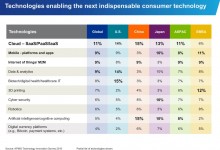
Photo by Joshua Sortino on Unsplash
As we close the books on 2015, tech industry watchers are opening a new chapter full of exciting predictions for the future. Cloud computing is helping organizations big and small meet their business objectives now more than ever, especially in emerging markets. Additionally, IT shops will have more than half of their operations hosted in the cloud by the end of 2016.
Data from IDG Enterprise indicates that 56% of a company’s IT environment will be hosted in the cloud by the end of next year (up from 44% today). 8% of the 962 IT decision makers interviewed for the study said their entire IT environment was in the cloud. Companies use a mix of public, private and hybrid cloud services, with the private model being mostly preferred by enterprises. Now, here’s what we think sounds particularly interesting, not just for hot shot enterprises but for medium-sized players as well















